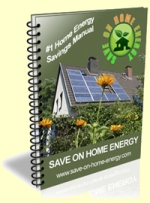Save On Home Energy Review
 Energy costs are rising all over the place. As the global economy recovers, the price of fossil fuels rises, driven up by rising global demand. That affects all areas of energy use, from gasoline for cars to home heating, cooling, and electricity.
Energy costs are rising all over the place. As the global economy recovers, the price of fossil fuels rises, driven up by rising global demand. That affects all areas of energy use, from gasoline for cars to home heating, cooling, and electricity.
Interest in alternative energy forms (electric and hybrid cars, solar and wind power) is on the rise, and so is interest in anything else that can save money on energy bills.
Peter Lindemann is offering on line a collection of tips and tools for increasing energy efficiency and lowering home energy bills. The web site is save-
All of the information offered in this e-
The e-
In fact, efficient use of energy is just as important as where the energy comes from, so this is a timely book. Think of energy inefficiency as energy that is thrown away rather than used: we get no benefit from it, and it just floats away in the form of waste heat.
If you’re actually using only ten percent of the energy produced, and can improve that to thirty or forty percent, that’s equivalent to producing three or four times as much energy –
If you want to build and install a home energy system, then the information here can save you a lot on that system, indirectly, because cutting your home energy use will mean you don’t need to install as big a system to meet your needs, and no matter how you go about installing a solar or wind system (contractor-
So this information could end up saving you a lot more than the fifty percent of your home energy bill that Lindemann promises you can save, depending on your long-
The e-
The book is packaged with a few other bells and whistles and presented as being available at a greatly reduced price; setting all the advertising and hype aside, it costs $27 and comes with a 60-
That’s a fairly high price for an e-
It’s obviously only a small fraction of what the information could save on energy costs in the home if it lives up to the claims made by Lindemann and his customer testimonials, and by all appearances it does.